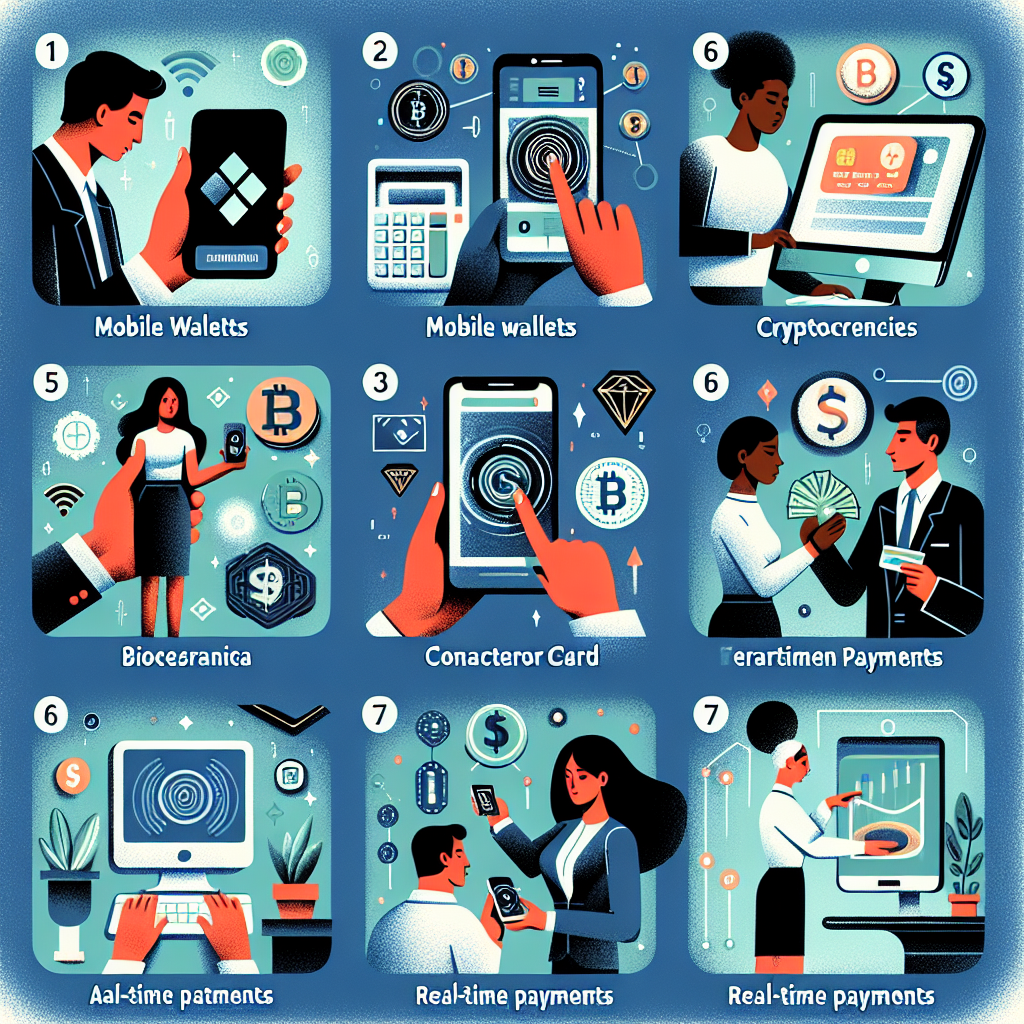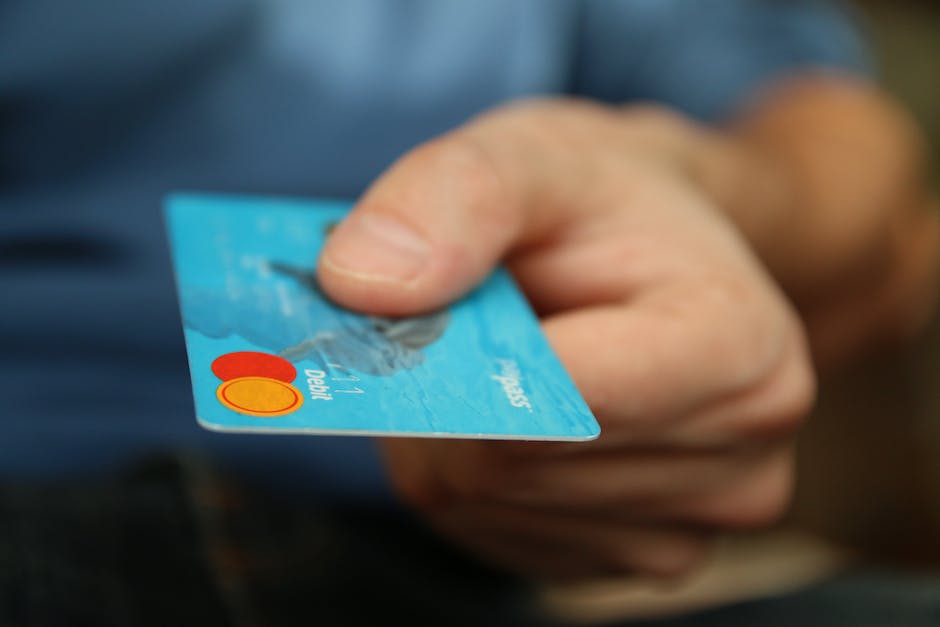-
Table of Contents
The Rise of Mobile Payments
The Rise of Mobile Payments
In recent years, the world has witnessed a significant rise in the use of mobile payments. With the increasing popularity of smartphones and the convenience they offer, it is no surprise that more and more people are opting for this mode of payment. Mobile payments have revolutionized the way we make transactions, and they are shaping the future of the payment industry.
One of the key factors driving the rise of mobile payments is the widespread adoption of smartphones. These devices have become an integral part of our lives, and we rely on them for various tasks, including making payments. With just a few taps on our screens, we can now pay for goods and services without the need for physical cash or cards. This convenience has made mobile payments a preferred choice for many consumers.
Another factor contributing to the rise of mobile payments is the increasing number of mobile payment apps available in the market. Companies like Apple, Google, and Samsung have developed their own payment apps, which allow users to link their bank accounts or credit cards and make payments with ease. These apps offer a seamless and secure payment experience, making them highly attractive to consumers.
Furthermore, the COVID-19 pandemic has accelerated the adoption of mobile payments. With the need for contactless transactions to minimize the risk of spreading the virus, more businesses have started accepting mobile payments as a safer alternative to cash or card payments. This shift in consumer behavior has further fueled the growth of mobile payments and is likely to continue even after the pandemic subsides.
The rise of mobile payments has also been driven by the increasing acceptance of digital wallets. Digital wallets, such as Apple Pay and Google Pay, allow users to store their payment information securely on their smartphones. This eliminates the need to carry physical wallets or cards, making transactions even more convenient. Moreover, digital wallets offer enhanced security features, such as biometric authentication, which adds an extra layer of protection to users’ payment information.
In addition to convenience and security, mobile payments offer several other benefits. For businesses, accepting mobile payments can streamline their operations and reduce the need for cash handling. This can lead to cost savings and increased efficiency. Mobile payments also provide businesses with valuable data and insights into consumer behavior, which can be used to personalize marketing strategies and improve customer experiences.
Looking ahead, the future of mobile payments seems promising. As technology continues to advance, we can expect to see further innovations in this space. For instance, the integration of mobile payments with other emerging technologies, such as blockchain and artificial intelligence, could revolutionize the way we make transactions. These advancements could enhance security, speed up transactions, and enable new payment methods.
In conclusion, the rise of mobile payments is reshaping the future of transactions. With the increasing adoption of smartphones, the availability of mobile payment apps, and the need for contactless transactions, mobile payments have become a preferred choice for consumers. The convenience, security, and benefits offered by mobile payments make them an attractive option for businesses as well. As technology continues to evolve, we can expect further advancements in mobile payments, paving the way for a more seamless and efficient payment experience.
Contactless Payment Technology
Contactless Payment Technology: Revolutionizing the Way We Pay
In today’s fast-paced world, convenience is key. As technology continues to advance, so do our payment methods. Gone are the days of fumbling for cash or swiping a credit card. Contactless payment technology has emerged as a game-changer, revolutionizing the way we pay for goods and services. With its seamless and secure nature, it is no wonder that contactless payment technology is one of the top trends shaping the future of transactions.
Contactless payment technology, also known as tap-and-go or near-field communication (NFC), allows consumers to make payments by simply tapping their card or mobile device on a payment terminal. This technology uses radio frequency identification (RFID) or near-field communication to transmit payment information securely and quickly. The convenience of contactless payments has made it increasingly popular among consumers and businesses alike.
One of the key advantages of contactless payment technology is its speed. With a simple tap, transactions can be completed in a matter of seconds. This not only saves time for consumers but also allows businesses to process payments more efficiently, reducing long queues and improving customer satisfaction. In a world where time is of the essence, contactless payments offer a swift and hassle-free experience.
Security is another crucial aspect of contactless payment technology. Many consumers are concerned about the safety of their financial information when using new payment methods. However, contactless payments are designed with security in mind. Each transaction is encrypted, ensuring that sensitive data is protected from potential hackers. Additionally, contactless payments require close proximity between the card or device and the payment terminal, reducing the risk of unauthorized transactions.
The widespread adoption of contactless payment technology has been driven by the increasing popularity of mobile wallets. Mobile wallets, such as Apple Pay and Google Pay, allow users to store their payment information securely on their smartphones. By simply holding their phone near a payment terminal, users can make purchases without the need for physical cards. This convenience has led to a surge in mobile wallet usage, with more and more consumers embracing this technology.
Contactless payment technology is not limited to smartphones. Wearable devices, such as smartwatches and fitness trackers, are also equipped with NFC capabilities, enabling users to make payments on the go. These devices offer a new level of convenience, allowing users to leave their wallets and phones at home while still being able to make purchases effortlessly.
The COVID-19 pandemic has further accelerated the adoption of contactless payment technology. With the need for social distancing and reduced physical contact, consumers are increasingly turning to contactless payments as a safer alternative to cash or traditional card payments. Businesses have also responded by implementing contactless payment options to minimize the risk of virus transmission. This shift in consumer behavior is likely to have a lasting impact on the future of transactions.
In conclusion, contactless payment technology is revolutionizing the way we pay. Its speed, security, and convenience have made it a top trend shaping the future of transactions. With the rise of mobile wallets and wearable devices, contactless payments are becoming increasingly popular among consumers. The COVID-19 pandemic has further accelerated this trend, as contactless payments offer a safer alternative to traditional payment methods. As technology continues to evolve, contactless payment technology will undoubtedly play a significant role in shaping the future of transactions.
Blockchain and Cryptocurrency in Transactions

Blockchain and Cryptocurrency in Transactions
In recent years, blockchain technology and cryptocurrency have emerged as game-changers in the world of transactions. These innovative technologies have the potential to revolutionize the way we make payments, offering increased security, transparency, and efficiency. As we look to the future, it is clear that blockchain and cryptocurrency will play a significant role in shaping the payment landscape. Let’s explore some of the top trends in this space.
First and foremost, the rise of blockchain technology has paved the way for secure and tamper-proof transactions. Blockchain, essentially a decentralized digital ledger, allows for the recording of transactions in a transparent and immutable manner. This means that every transaction is permanently recorded and cannot be altered or deleted. This level of security is particularly appealing in an era where data breaches and fraud are rampant.
Furthermore, blockchain technology eliminates the need for intermediaries in transactions. Traditionally, financial institutions such as banks have acted as intermediaries, facilitating and verifying transactions. With blockchain, however, transactions can be conducted directly between parties, cutting out the middleman. This not only reduces costs but also speeds up the payment process, as there is no longer a need for multiple layers of verification.
Cryptocurrency, on the other hand, has gained significant traction as a digital form of currency. Bitcoin, the most well-known cryptocurrency, has seen its value skyrocket in recent years, attracting both investors and businesses alike. Cryptocurrencies offer several advantages over traditional fiat currencies. For one, they are not subject to government regulations or central bank policies, making them immune to inflation and political instability. Additionally, cryptocurrency transactions can be conducted quickly and securely, thanks to the underlying blockchain technology.
One of the key trends in the cryptocurrency space is the increasing acceptance of digital currencies by businesses. Major companies such as Microsoft, Overstock, and PayPal now accept Bitcoin as a form of payment. This growing acceptance is a clear indication that cryptocurrencies are becoming more mainstream and are here to stay. As more businesses adopt cryptocurrencies, the demand for traditional payment methods may decline, further driving the adoption of blockchain and cryptocurrency in transactions.
Another trend worth noting is the emergence of stablecoins. Unlike volatile cryptocurrencies like Bitcoin, stablecoins are pegged to a stable asset, such as a fiat currency or a commodity. This stability makes them more suitable for everyday transactions, as their value remains relatively constant. Stablecoins offer the benefits of cryptocurrencies, such as fast and secure transactions, without the volatility that has deterred some users.
Furthermore, the integration of blockchain and cryptocurrency with other emerging technologies is another trend to watch. For instance, the combination of blockchain and artificial intelligence (AI) has the potential to streamline and automate payment processes. AI-powered smart contracts can automatically execute transactions once predefined conditions are met, eliminating the need for manual intervention. This integration of technologies can significantly enhance the efficiency and accuracy of transactions.
In conclusion, blockchain and cryptocurrency are revolutionizing the way we make payments. The security, transparency, and efficiency offered by these technologies are reshaping the payment landscape. As we move forward, it is clear that blockchain and cryptocurrency will continue to play a significant role in transactions. From secure and tamper-proof transactions to the increasing acceptance of cryptocurrencies by businesses, the future of payments is undoubtedly being shaped by blockchain and cryptocurrency. It is an exciting time for the industry, and we can expect even more innovations and advancements in the years to come.
Biometric Authentication for Secure Payments
Biometric Authentication for Secure Payments
In today’s digital age, where transactions are increasingly conducted online, security has become a paramount concern for businesses and consumers alike. Traditional methods of authentication, such as passwords and PINs, are no longer sufficient to protect sensitive financial information. As a result, biometric authentication has emerged as a cutting-edge technology that offers a more secure and convenient way to verify transactions.
Biometric authentication uses unique physical or behavioral characteristics, such as fingerprints, facial recognition, or voice patterns, to verify a person’s identity. Unlike passwords or PINs, which can be easily forgotten or stolen, biometric data is inherently personal and difficult to replicate. This makes it an ideal solution for enhancing the security of payment transactions.
One of the key advantages of biometric authentication is its convenience. With traditional methods, users often struggle to remember multiple passwords or PINs for different accounts. This can lead to frustration and even security risks, as individuals may resort to using weak or easily guessable passwords. Biometric authentication eliminates the need for memorizing complex passwords, as it relies on unique physical or behavioral traits that are inherent to each individual. This not only simplifies the authentication process but also enhances security by reducing the risk of password-related vulnerabilities.
Moreover, biometric authentication offers a higher level of security compared to traditional methods. Passwords and PINs can be easily stolen or hacked, especially with the increasing sophistication of cybercriminals. Biometric data, on the other hand, is much more difficult to replicate or forge. For example, fingerprints are unique to each individual and cannot be easily duplicated. This makes it extremely challenging for fraudsters to gain unauthorized access to someone’s financial information. By incorporating biometric authentication into payment systems, businesses can significantly reduce the risk of identity theft and fraudulent transactions.
Furthermore, biometric authentication provides an added layer of trust and confidence for consumers. With the rise of online shopping and mobile payments, consumers are increasingly concerned about the security of their financial information. By offering biometric authentication as a secure payment option, businesses can alleviate these concerns and build trust with their customers. This, in turn, can lead to increased customer loyalty and repeat business.
The adoption of biometric authentication for secure payments is already gaining momentum. Many smartphones and tablets now come equipped with built-in biometric sensors, such as fingerprint scanners or facial recognition technology. This allows users to conveniently and securely authenticate their transactions with a simple touch or glance. In addition, financial institutions and payment service providers are increasingly integrating biometric authentication into their platforms to enhance security and streamline the payment process.
However, it is important to note that biometric authentication is not without its challenges. Privacy concerns and the potential misuse of biometric data are valid considerations that need to be addressed. Businesses must ensure that they have robust security measures in place to protect biometric data from unauthorized access or breaches. Additionally, clear guidelines and regulations should be established to govern the collection, storage, and use of biometric information.
In conclusion, biometric authentication is revolutionizing the way we secure payment transactions. Its convenience, enhanced security, and ability to build trust with consumers make it a powerful tool for businesses in the digital era. As technology continues to advance, we can expect biometric authentication to become even more prevalent, shaping the future of secure transactions.
The Impact of Artificial Intelligence on Transaction Processes
The Impact of Artificial Intelligence on Transaction Processes
In today’s rapidly evolving digital landscape, artificial intelligence (AI) has emerged as a game-changer in various industries. One area where AI is making a significant impact is in transaction processes. From streamlining payment procedures to enhancing security measures, AI is revolutionizing the way we conduct transactions.
One of the key ways AI is transforming transaction processes is through the automation of payment systems. Traditionally, payment processes involved manual intervention, which was time-consuming and prone to errors. However, with AI-powered systems, payments can now be processed automatically, reducing the need for human intervention and increasing efficiency.
AI is also playing a crucial role in fraud detection and prevention. As technology advances, so do the methods used by fraudsters. To combat this, AI algorithms are being developed to analyze vast amounts of data and identify patterns that indicate fraudulent activity. By continuously learning from new data, AI systems can adapt and improve their ability to detect and prevent fraud, providing businesses and consumers with greater security and peace of mind.
Furthermore, AI is enabling the development of personalized payment experiences. By analyzing customer data, AI algorithms can understand individual preferences and tailor payment options accordingly. For example, AI-powered chatbots can provide personalized recommendations for payment methods based on a customer’s previous transactions and spending habits. This level of personalization not only enhances the customer experience but also increases the likelihood of successful transactions.
Another area where AI is making a significant impact is in customer support. AI-powered chatbots and virtual assistants are becoming increasingly sophisticated, allowing businesses to provide round-the-clock support to their customers. These AI systems can handle a wide range of customer queries, from payment-related issues to general inquiries, providing quick and accurate responses. This not only improves customer satisfaction but also reduces the workload on customer support teams, allowing them to focus on more complex issues.
AI is also driving innovation in payment authentication methods. Traditional methods such as passwords and PINs are increasingly being replaced by biometric authentication, which uses unique physical or behavioral characteristics to verify a user’s identity. AI algorithms play a crucial role in analyzing and interpreting biometric data, ensuring accurate and secure authentication. This shift towards biometric authentication not only enhances security but also provides a more convenient and seamless payment experience for users.
Furthermore, AI is enabling the development of predictive analytics in transaction processes. By analyzing historical transaction data, AI algorithms can identify trends and patterns that can help businesses make informed decisions. For example, AI-powered systems can predict customer behavior, allowing businesses to offer targeted promotions and discounts. This not only increases customer engagement but also improves the overall efficiency of transaction processes.
In conclusion, AI is revolutionizing transaction processes in numerous ways. From automating payment systems to enhancing security measures, AI is reshaping the future of transactions. By leveraging the power of AI, businesses can streamline their payment processes, provide personalized experiences, improve customer support, enhance security, and make data-driven decisions. As AI continues to advance, we can expect even more innovative solutions that will further transform the way we conduct transactions.
Q&A
1. What are the top payment trends shaping the future of transactions?
– Mobile payments
– Contactless payments
– Biometric authentication
– Peer-to-peer payments
– Blockchain technology
– Subscription-based payments
– Voice-activated payments
2. How are mobile payments shaping the future of transactions?
Mobile payments allow users to make transactions using their smartphones, eliminating the need for physical cards or cash.
3. What is the significance of contactless payments?
Contactless payments enable users to make transactions by simply tapping their cards or smartphones on a payment terminal, providing a faster and more convenient experience.
4. How does biometric authentication impact transactions?
Biometric authentication, such as fingerprint or facial recognition, enhances security and simplifies the authentication process for transactions.
5. What role does blockchain technology play in the future of transactions?
Blockchain technology offers secure and transparent transactions by eliminating intermediaries, reducing costs, and increasing efficiency in areas like cross-border payments and supply chain management.








